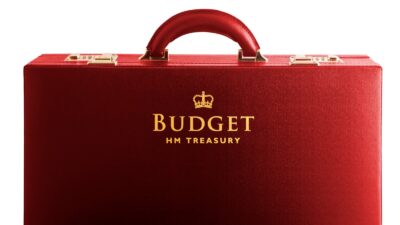BT (LSE: BT-A) is not a bargain, but you may well argue that it looks almost fully priced right now, based on fundamentals and trading multiples. Still, I believe you ought to give management the benefit of the doubt and retain some exposure right now.
Elsewhere, I am not a fan of the banking sector, but HSBC (LSE: HSBA) may offer more upside than the telecom behemoth — not least because it’s cheaper, based on similar metrics.
Finally, I’d argue that Ocado (LSE: OCDO) — with its much higher risk profile — could outperform both BT and HSBC to the end of the year. This is risky bet perhaps, but one that is worth taking at this price. Here’s why.
Keep Going, BT!
With BT, it has always been the case of how swiftly BT would achieve growth to boost its valuation. Its strategy should be praised, and you may be tempted to add BT to your portfolio before full-year results are due on 7 May.
Through its £12.5bn acquisition of mobile operator EE, BT has become a fully fledged quad-play services provider, true.
Since the end of the fourth quarter, however, BT has rallied a lot based on that possibility and now trades at a level — 454p a share — that doesn’t represent a bargain for value hunters. Its pension deficit remains a threat to value, of course, while execution and expectations surrounding its EE deal are risks that management must handle properly.
If estimates from analysts are correct, BT could easily surge to 500p… but what concerns me is the high degree of volatility that the shares could experience if trading conditions in the broader market get tougher. Its stock trades around the level it recorded in mid-February, so it’s essentially flat since then, while the FTSE 100 is up 2.6% over the period.
February Woes At HSBC
February was a very bad time of the year for HSBC, which lost about 30p of value during the month, dipping below 580p from 610p, as it emerged that the bank had helped wealthy clients dodge taxes.
Just like BT, HSBC is flat in the last eight weeks of trading.
In my recent coverage, I argued that HSBC has funding options, which is a very important factor for banks in the current environment because most financial institutions may need to continue to shore up their capital ratios to keep regulators at bay.
HSBC now trades at 620p, and it’s flat for the year, but is up 10% in the last month of trading. Based on its balance sheet, fundamentals, trading multiples, forward yield and possible extraordinary corporate activity, a price target of up to 700p is possible to the end of the year.
By then, Ocado shareholders may have made a killing.
High-Risk Ocado Is Still On My Wish List
I suggest you keep minimal exposure to Ocado in order to minimise the losses that such an investment may bring — but if you are invested, you may want to hold onto it a bit longer.
At 30x forward adjusted operating cash flow, Ocado is surely expensive, but if its top line continues to grow in line with recent years, and earnings surprise investors — and there are reasons to believe they will — a price target above 450p should not be ruled out.
Its core cash flow and margins are nicely rising, and although I am aware that Ocado could be a disappointment, you would do well to back a company whose equity value (368p a share) has doubled since it floated five years ago on the back of strong operational improvements and no debts.
You could invest, say, 1.5% of your portfolio if you believe, as I do, that core cash flow from operations will rise more quickly this year and executives will continue to properly manage working capital — then, Ocado’s equity value per share may well be between 500p and 550p at the end of 2015.







